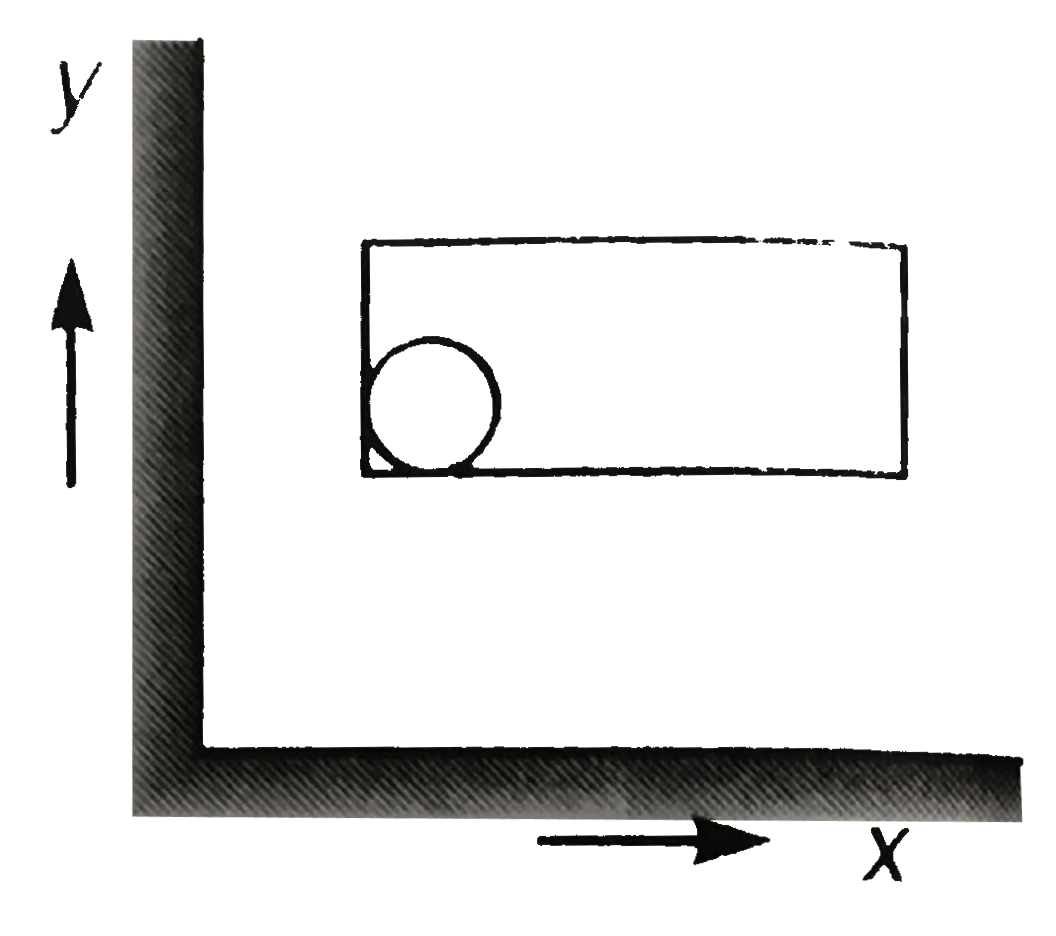The edges of an aluminum cube are 10cm long. One face of the cube is firmly fixed to a vertical wall. A mass of 100kg is then attached to the opposite face of the cube. Shear modulus of aluminum is 25×109Pa, the vertical deflection in the face to which mass is attached is
4×10−5m
4×10−6m
4×10−7m
4×10−8m
The correct Answer is:C
To find the vertical deflection in the face of the aluminum cube to which the mass is attached, we can follow these steps:
Step 1: Identify Given Values
- Length of the cube edge (L) = 10 cm = 0.1 m
- Mass (m) = 100 kg
- Shear modulus (G) = 25 x 10^9 Pa
- Gravitational acceleration (g) = 9.8 m/s²
Step 2: Calculate the Force (F) Applied
The force applied due to the mass can be calculated using:
F=m⋅g
Substituting the values:
F=100kg⋅9.8m/s2=980N
Step 3: Calculate the Area (A) of the Face
The area of one face of the cube can be calculated as:
A=L2
Substituting the value of L:
A=(0.1m)2=0.01m2
Step 4: Calculate Shear Stress (τ)
Shear stress (τ) can be calculated using:
τ=FA
Substituting the values:
τ=980N0.01m2=98000Pa
Step 5: Relate Shear Stress to Shear Strain
Using the relationship between shear modulus (G), shear stress (τ), and shear strain (γ):
G=τγ
Rearranging gives:
γ=τG
Substituting the values:
γ=98000Pa25×109Pa=3.92×10−6
Step 6: Calculate the Vertical Deflection (Δl)
The vertical deflection (Δl) can be calculated using the formula:
Δl=γ⋅L
Substituting the values:
Δl=3.92×10−6⋅0.1m=3.92×10−7m
This can be approximated to:
Δl≈4×10−7m
Final Answer
The vertical deflection in the face to which the mass is attached is approximately:
Δl≈4×10−7m
---
- Length of the cube edge (L) = 10 cm = 0.1 m
- Mass (m) = 100 kg
- Shear modulus (G) = 25 x 10^9 Pa
- Gravitational acceleration (g) = 9.8 m/s²
The force applied due to the mass can be calculated using:
F=m⋅g
Substituting the values:
F=100kg⋅9.8m/s2=980N
The area of one face of the cube can be calculated as:
A=L2
Substituting the value of L:
A=(0.1m)2=0.01m2
Shear stress (τ) can be calculated using:
τ=FA
Substituting the values:
τ=980N0.01m2=98000Pa
Using the relationship between shear modulus (G), shear stress (τ), and shear strain (γ):
G=τγ
Rearranging gives:
γ=τG
Substituting the values:
γ=98000Pa25×109Pa=3.92×10−6
The vertical deflection (Δl) can be calculated using the formula:
Δl=γ⋅L
Substituting the values:
Δl=3.92×10−6⋅0.1m=3.92×10−7m
This can be approximated to:
Δl≈4×10−7m
The vertical deflection in the face to which the mass is attached is approximately:
Δl≈4×10−7m
Topper's Solved these Questions
- MECHANICAL PROPERTIES OF SOLIDSBOOK - NCERT FINGERTPS ENGLISHCHAPTER - MECHANICAL PROPERTIES OF SOLIDSEXERCISE - APPLICATIONS OF ELASTIC BEHAVIOUR OF MATERIALS
8 Videos
- MECHANICAL PROPERTIES OF SOLIDSBOOK - NCERT FINGERTPS ENGLISHCHAPTER - MECHANICAL PROPERTIES OF SOLIDSEXERCISE - HOTS
8 Videos
- MECHANICAL PROPERTIES OF SOLIDSBOOK - NCERT FINGERTPS ENGLISHCHAPTER - MECHANICAL PROPERTIES OF SOLIDSEXERCISE - STRESS-STRAIN CURVE
5 Videos
- MECHANICAL PROPERTIES OF FLUIDSBOOK - NCERT FINGERTPS ENGLISHCHAPTER - MECHANICAL PROPERTIES OF FLUIDSEXERCISE - NCERT Exemplar
5 Videos
- MOTION IN A PLANE BOOK - NCERT FINGERTPS ENGLISHCHAPTER - MOTION IN A PLANE EXERCISE - Assertion And Reason
15 Videos
Similar Questions
One of the square faces of a metal slab of side 50 cm and thickness 20 cm is rigidly fixed on a horizontal surface. If a tangential force of 30 N is applied to the top face and it is known that the shear modulus of the material is 4×1010N/m2, then the displacement (in m) of the top face is
View SolutionOne end of a wire 2m long and 0.2 cm^2 in cross section is fixed in a ceiling and a load of 4.8 kg is attached to the free end. Find the extension of the wire. Young modulus of steel =2.0×1011Nm−2. Take g=10ms−2.
View SolutionA rubber eraser 3 cm×1cm×8cm is clamped at one end with 8 cm edge as vertical. A horizontal force of 2.1N is applied on the free surface. Shear modulus of rubber =1.4×105Nm−2. The horizontal displacement (in mm) of the top face is x. Find x.
View SolutionA lead cube of side 20 cm is subjected under a shearing force of magnitude 5.6x106N. If the lower face of the cube is fixed, then the displacement in the upper face is (If shear modulus of lead is 5.6⋅106Nm2)
View SolutionAn ice-cube of edge is 10 cm floating in water. Time period of small vertical oscillations of the cube is: (Specific gravity of ice is 0.9)
View SolutionA horizontal aluminum rod of diameter 4.8cm projects 5.3cm from a wall. A 1200kg object is suspended from the end of the rod. The shear modulus of aluminum is 3.0×1010N/m2. Neglecting the mass of the rod find a shearing stress on the rod and b the vertical deflection of the end of the rod.
View SolutionOne of the faces of a copper cube of side 7.7 cm is maintained at 100°C and the opposite face at 30°C. If the thermal conductivity of copper is 385Wm−1K−1. Calculate the rate of heat flow through the cube?
View SolutionA solid cube of the edge a is molten and moulded in eight identical small solid cubes and are placed on one other on a straight line with the edge of the bottom cube on the same horizontal plane on which big cube was placed , then the vertical shift in the centre of mass is
View SolutionA sphere of mass 1kg rests at one corner of a cube. The cube is moved with a velocity v=(8tˆi−2t2)ˆj, where tis time in second . The force by sphere on the cube at t=1s is (g=10m/s−2) [figure shown vertical plane of the cube]

View SolutionA particle a having a charge of 5.0×10−7C is fixed in. a vertical wall. A second particle B of mass 100 g and. having equal charge is supended by a silk thread. of length 30 cm form the wall. The point of suspension is. 30 cm above the particle A. Find the angle of the thread. with the vertical when it stays in equilibrium.
View Solution
